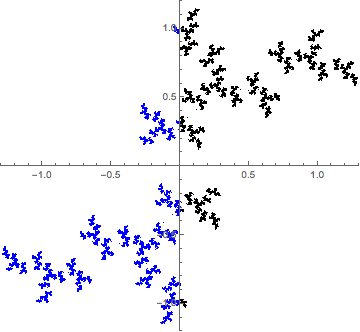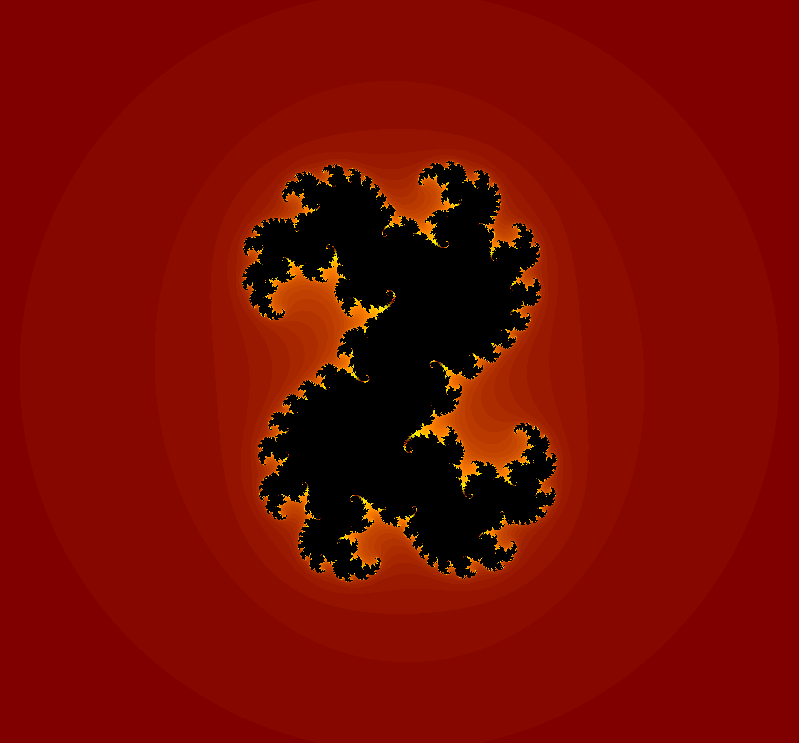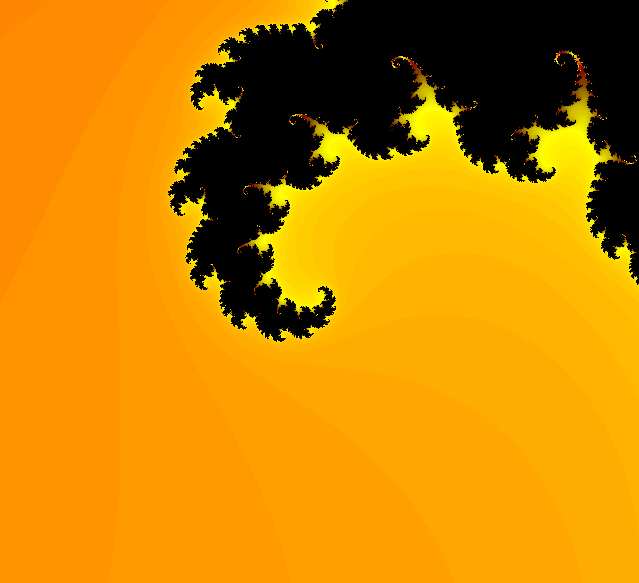I want to know why, when I look at the Julia sets of the quadratic family, I see only a finite number of repeating patterns, rather than a countable infinity of them.
My question is specifically about the interaction of these three theorems:
Theorem 1: Let $z_0\in\mathbb{C}$ be an repelling periodic point of the function $f_c:z\mapsto z^2+c$. Tan Lei proved in the 90s that the filled in Julia set $K_c$ is asymptotically $\lambda$-self-similar about $z_0$, where $\lambda$ denotes the multiplier of the orbit.
Theorem 2: (Iterated preimages are dense) Let $z\in J_c$, then the preimages of $z$ under the set $\cup_{n\in\mathbb{N}} ~ f^{-n}(z)$ is dense in $J_c$
Theorem 3: $J_c$ is the closure of repelling periodic points.
Let's expand on Theorem 1:
Technically it means that the sets $(\lambda^n \tau_{-z_0} K_c)\cap\mathbb{D}_r$ approach (in the Hausdorff metric of compact subsets of $\mathbb{C}$) a set $X \cap \mathbb{D_r}$ where the limit model $X \subset \mathbb{C}$ is such $\lambda$-self-similar: $X = \lambda X$.
Practically this means that, when one zooms into a computer generated $K_c$ about $z_0$, the image becomes, to all practical purposes, self-similar. No new information is gained by zooming again about $z_0$.
Lei also proved that $K_c$ is asymptotically $\lambda$-self-similar about the preimages of $z_0$, with the same limit model $X$, up to rotation and rescaling. This means that zooming in at each point in the repelling cycle of $z_0$, provides a basically the same spectacle, apart maybe rotated, that does zooming into $z_0$. Not only, but the preimages of $z_0$ are dense in $J_{c}$ (Theorem 2), meaning that this $X$ pattern can be seen throughout the Julia set.
Now, let consider a different repelling periodic point $z_1$. Lei tells us that $K_c$ will be asymptotically self-similar about $z_1$ and all its pre-images, with an a priori different limit set $Y$. Since the pre-images of $z_1$ are also dense in $J_c$ we may observe the limit model $Y$ all over $J_c$.
So, a priori to each repelling periodic orbit, there should be an associated limit model, and each of these limit models could be distinct. However, when I look at a computer generated Julia set, the parts of it that are asymptotically self-similar, seem to approach one of a finite set of limit models (up to rotation).
Why is it so? Maybe my eye cannot see the difference? Or the computer cannot generate all of the detail?
Or is it the case that the limit models are finite?
 In this image (read like a comic strip), I zoom into the neighbourhood of a point, four times, then purposely "miss the center", and zoom onto a detail for four more times. The patterns that emerge are very similar. Are they the same?
In this image (read like a comic strip), I zoom into the neighbourhood of a point, four times, then purposely "miss the center", and zoom onto a detail for four more times. The patterns that emerge are very similar. Are they the same?
This is perhaps one of the simplest Julia set, but the experience is













